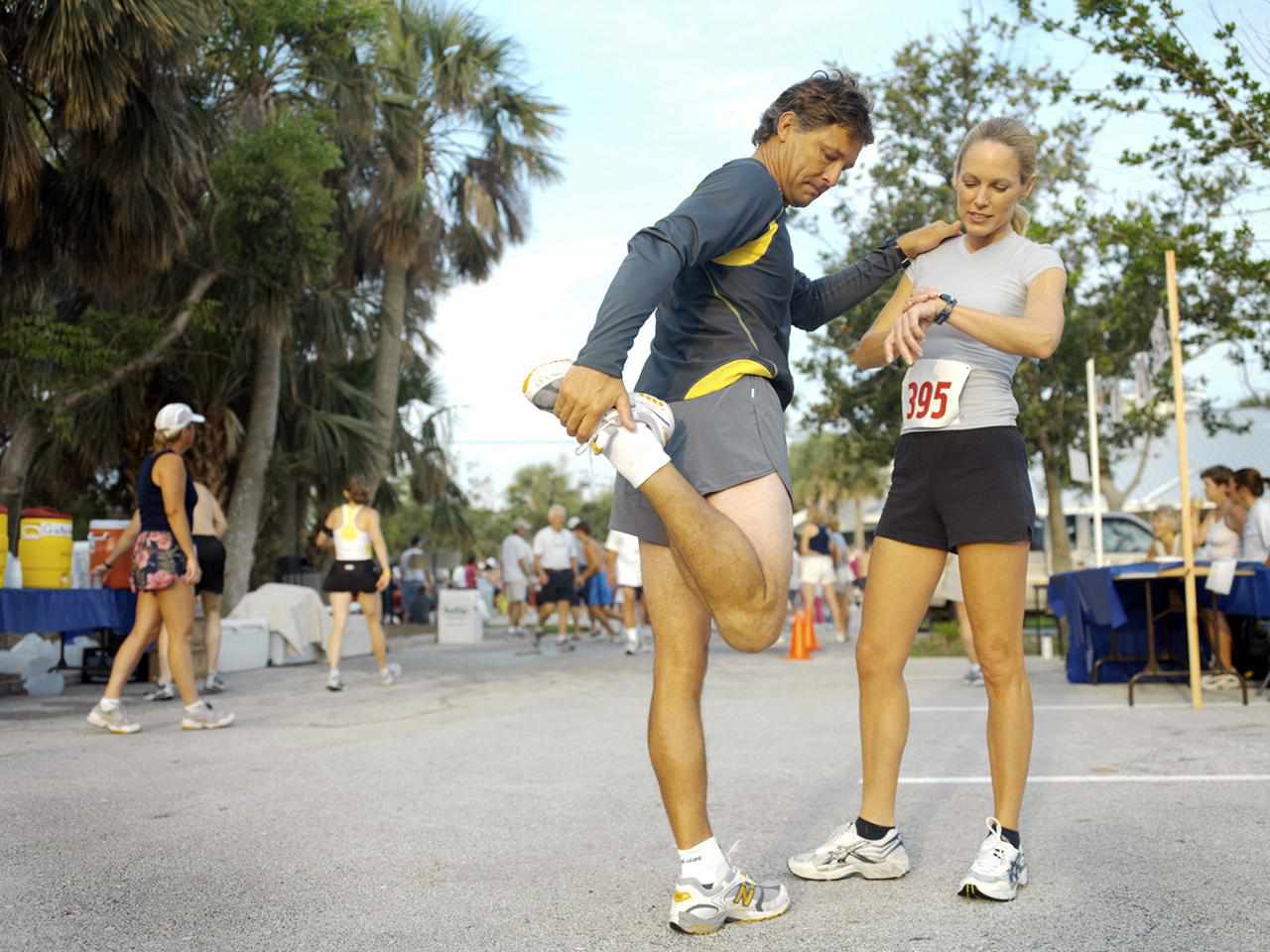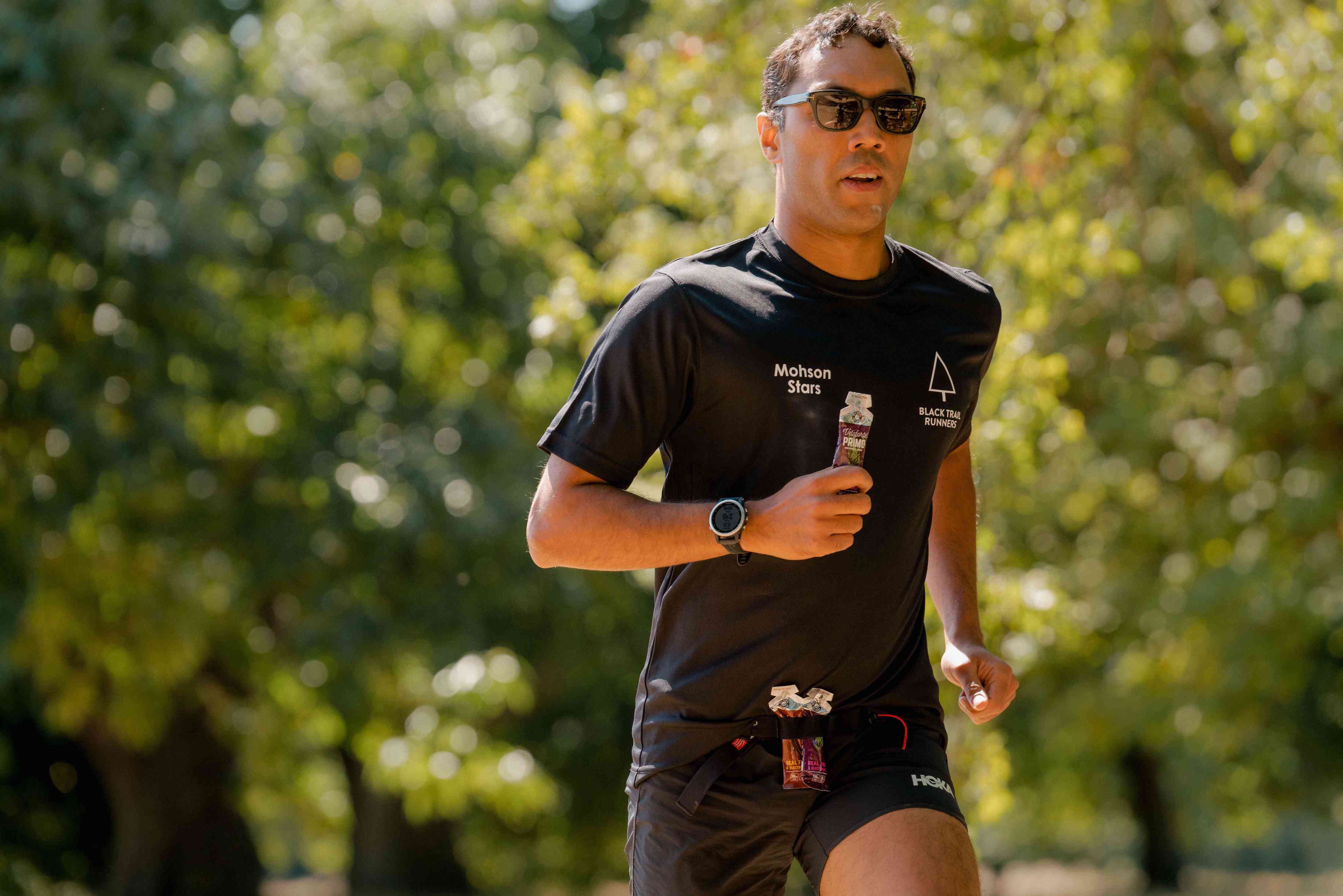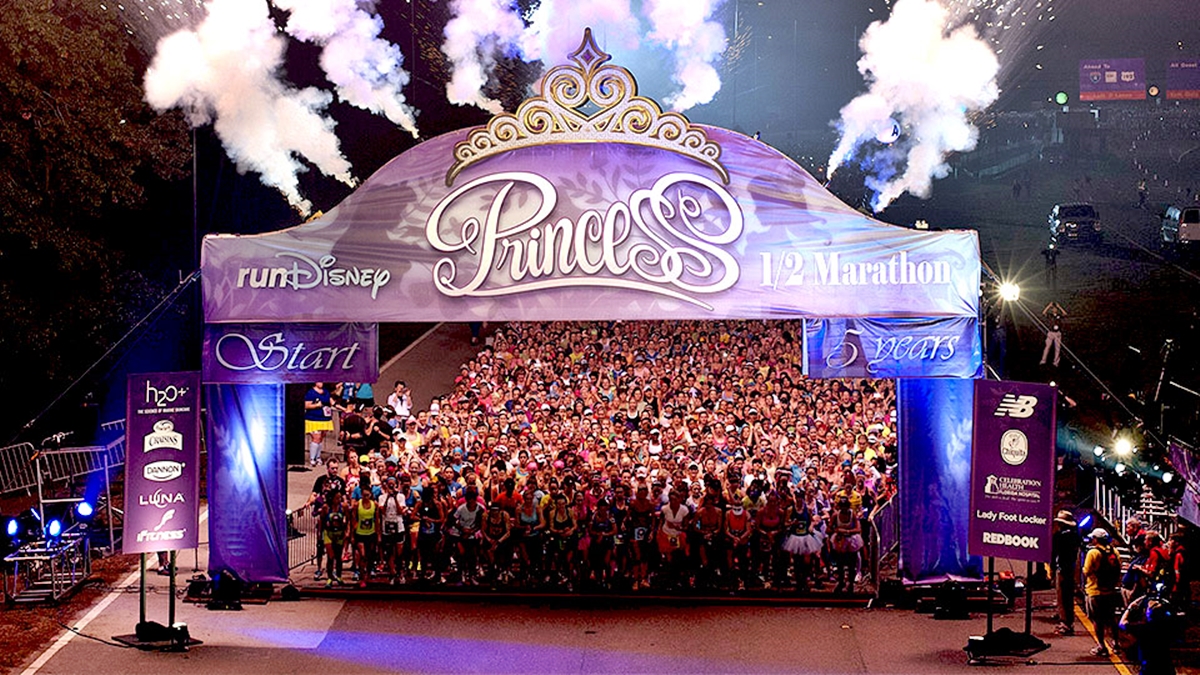Home>Misc>Featured>How Long Before A Marathon To Run A Half Marathon


Featured
How Long Before A Marathon To Run A Half Marathon
Modified: January 22, 2024
Find out the ideal timing for running a half marathon before a marathon and maximize your performance. Featured article with expert tips.
Introduction
Running a marathon is a significant physical and mental challenge that requires proper training and preparation. One common question that arises when considering tackling a marathon is how long before the marathon one should run a half marathon. The half marathon distance, 13.1 miles, is a popular race distance in its own right, and many runners use it as a stepping stone towards the ultimate goal of completing a marathon.
Understanding the half marathon distance and its significance can give runners a better grasp of how to time their training and build towards their marathon goal. In this article, we will explore the benefits of running a half marathon before a full marathon, the necessary training involved, and factors to consider when determining the timing for completing a half marathon in preparation for your marathon.
Running a half marathon before a marathon serves multiple purposes. Firstly, it provides an opportunity to gauge your fitness and assess your readiness for the full marathon distance. The half marathon acts as a test run, allowing you to evaluate your pacing, endurance, and mental fortitude.
Additionally, running a half marathon helps to build your confidence as a runner. Successfully completing a half marathon can boost your motivation and show you that you are capable of tackling longer distances. It serves as a milestone in your training journey and acts as a positive reinforcement of your progress.
Furthermore, running a half marathon allows you to experience the atmosphere and logistics of a major race. It provides valuable insight into race-day preparations, such as fueling, hydration, and pacing strategies. This experience can be invaluable when it comes to planning and executing your marathon race strategy.
Now that we understand the benefits of running a half marathon before a full marathon, let’s delve into the training required to build up to this intermediate distance.
Understanding the Half Marathon Distance
The half marathon distance of 13.1 miles is a popular choice for runners looking to challenge themselves beyond the 10k or 5k distances. It strikes a balance between the speed and intensity of shorter races and the endurance required for longer distances like the full marathon. Understanding the half marathon distance is crucial for runners looking to use it as a stepping stone towards their marathon goals.
One of the biggest advantages of the half marathon distance is its accessibility. While a full marathon often requires months of training and a significant time commitment, the half marathon can be accomplished with proper training in a shorter time frame. This makes it an attractive option for runners who want to challenge themselves but may not have the resources or time to commit to a full marathon.
From a physiological standpoint, the half marathon distance tests both aerobic and anaerobic fitness. It requires a balance of endurance and speed, as runners need to maintain a steady pace for a considerable distance while also having enough energy to push through any inclines or sprints during the race. The half marathon also challenges the mental fortitude of runners, as it demands focus, determination, and perseverance to push through the inevitable moments of fatigue and doubt.
Another benefit of the half marathon distance is the wide range of races available. From local community races to internationally recognized events, there are numerous opportunities to participate in and experience the half marathon distance. This enables runners to choose a race that aligns with their goals, preferences, and timeline.
Understanding the half marathon distance also involves considering the training required to prepare for it. Generally, a solid training plan for a half marathon involves a combination of long runs, speedwork, and strength training. Long runs help to build endurance, speedwork improves pace and cardiovascular capacity, and strength training helps prevent injuries and improves overall performance.
Overall, the half marathon distance offers a challenging yet manageable goal for runners looking to push their limits and prepare for a full marathon. It provides the opportunity to experience the commitment and dedication required for longer races while still being accessible to a wide range of runners. By understanding the half marathon distance, runners can better plan and execute their training towards achieving their marathon aspirations.
Training for a Half Marathon
Training for a half marathon requires a structured approach to gradually build endurance, improve speed, and prevent injuries. Whether you are a beginner or an experienced runner, following a well-designed training plan is essential for success in achieving your half marathon goals.
The duration of a half marathon training plan typically ranges from 12 to 16 weeks, depending on your current fitness level and running experience. During this time, your training should consist of a combination of three key components: long runs, speedwork, and recovery runs.
Long runs are the backbone of half marathon training. They should be completed once a week and gradually increased in distance as you progress in your training. These runs not only build your endurance but also help you become familiar with the physical and mental challenges of running for an extended period. Aim to gradually increase your long run distance by 1-2 miles each week, with occasional cutback weeks to allow for recovery.
Speedwork is crucial for improving your race pace and building cardiovascular fitness. Incorporate interval training, tempo runs, and hill workouts into your training plan. Interval training involves alternating between periods of high intensity and rest, while tempo runs consist of running at a challenging, but sustainable pace for a specific distance. Hill workouts, on the other hand, help to build leg strength and power. Incorporating these types of workouts into your training will help you improve your overall speed and performance on race day.
While focusing on long runs and speedwork, it’s important not to neglect recovery runs. These shorter, easy-paced runs are designed to promote active recovery and aid in muscle repair. Recovery runs also help to prevent overtraining and reduce the risk of injury. Aim to complete one or two recovery runs per week, allowing your body to adapt to the training stimulus while still maintaining an active routine.
In addition to the three main components of training, strength training and cross-training can offer significant benefits to half marathon runners. Incorporating strength training exercises targeting the core, lower body, and upper body into your routine can improve your running form, enhance muscular endurance, and prevent imbalances and injuries. Cross-training activities such as swimming, cycling, or yoga can provide low-impact workouts that complement your running, improve flexibility, and aid in recovery.
Remember to listen to your body during training and adjust your plan as needed. Be mindful of any signs of overtraining or injury, and don’t be afraid to take rest days or seek professional advice when necessary. Finally, leading up to race day, engage in a taper period where you gradually reduce your mileage to allow your body to properly recover and be in optimal shape for the half marathon.
By following a well-structured training plan that encompasses long runs, speedwork, recovery runs, strength training, and cross-training, you will be well-prepared to conquer the half marathon distance and achieve your running goals.
Transitioning from Half Marathon to Marathon
Transitioning from running a half marathon to a full marathon is a significant step that requires careful planning and preparation. While running a half marathon is a great accomplishment, completing a full marathon is a whole new level of challenge and endurance. Here are some key considerations and tips for smoothly transitioning from the half marathon distance to the daunting task of running a marathon.
Firstly, it’s important to give yourself enough time to prepare for the marathon distance. Most training plans for a marathon range from 16 to 20 weeks, depending on your current fitness level. This longer training period allows your body to adapt gradually to the increased mileage and demands of the marathon.
When transitioning from the half marathon to the full marathon, it’s crucial to gradually increase your weekly mileage. This progressive approach helps to minimize the risk of overuse injuries and allows your body to adapt to the longer distances. Aim to increase your weekly mileage by 10% each week, ensuring that you have a mix of easy runs, long runs, and speedwork in your training plan.
Incorporating longer long runs is a key component of marathon training. While the longest run in a half marathon training plan typically ranges from 10 to 12 miles, marathon training requires building up to at least one or two 20-mile training runs. These long runs not only build your physical endurance but also provide a mental boost as you become confident in your ability to cover the marathon distance.
As you increase your training volume, it’s crucial to prioritize recovery and rest days. Listen to your body and make sure to include rest days in your training plan to allow for proper muscle repair and energy replenishment. Recovery strategies such as adequate sleep, proper nutrition, foam rolling, and stretching should also be incorporated into your routine to support your body’s recovery process.
Another important consideration when transitioning from the half marathon to the marathon is fueling and hydration. As the duration of your runs increases, you’ll need to establish a fueling strategy for long training runs and race day. Experiment with different forms of fuel such as gels, sports drinks, and real food to determine what works best for you. Hydration is equally important, so make sure to hydrate properly before, during, and after your runs.
Lastly, mentally prepare yourself for the challenge of the marathon. Running a marathon is not just a physical endeavor; it requires mental resilience and determination. Visualize yourself crossing the finish line, break down the distance into manageable segments, and find strategies to stay motivated during the race. Joining a local running group or finding a running partner can also provide valuable support and motivation throughout the marathon training process.
Transitioning from running a half marathon to a full marathon is a challenging but rewarding journey. By gradually increasing your training volume, incorporating longer long runs, prioritizing recovery, fueling adequately, and preparing mentally, you will be well-equipped to tackle the marathon distance and achieve your running goals.
Factors to Consider when Timing Your Half Marathon
Timing your half marathon strategically is essential for maximizing your performance and achieving your racing goals. While there is no one-size-fits-all answer to when you should schedule your half marathon, several factors should be taken into consideration to ensure you are properly prepared and ready for the race.
One of the most important factors to consider is your current fitness level. If you are a beginner or transitioning from shorter distances, it is advisable to give yourself sufficient time to build a base level of endurance and gradually increase your mileage before tackling a half marathon. This may mean allowing several months of consistent training to ensure you are adequately prepared for the distance.
Another factor to consider is the weather conditions during the time of the race. Running in extreme heat or cold can significantly impact your performance and overall experience. Pay attention to the climate of the prospective race location and select a time of year that offers more favorable weather conditions for you. This may involve researching historical weather patterns and selecting a race during a season that aligns with your preference and comfort.
Additionally, take into account your personal schedule and commitments. Choosing a half marathon date that aligns with a period of reduced stress and ample training time can greatly enhance your performance. Consider any upcoming vacations, work engagements, or major life events that may hinder your training or recovery. Aim for a time when you can prioritize your training and have enough time to gradually increase your mileage and recover properly.
Furthermore, consider the race itself and its reputation. Research the race course, elevation profile, and any unique challenges that may be associated with the event. Some races have a reputation for being particularly scenic, while others are known for their fast and flat courses. Depending on your goals and preferences, select a race that suits your strengths and aligns with your desired racing experience.
Take into account your personal goals and objectives for running a half marathon. Are you aiming for a personal best time, or are you simply focused on completing the distance? If you have a specific time goal in mind, choose a race that offers favorable conditions and attracts a competitive field. On the other hand, if you are more interested in enjoying the experience and embracing the atmosphere, select a race that emphasizes the camaraderie and excitement of the event.
Lastly, consider the availability of training resources and support leading up to the race. Look for race-specific training plans, local running groups, or online communities that can provide guidance and motivation throughout your training journey. Having access to resources and a support system can greatly enhance your preparation and overall race experience.
By taking into account factors such as your fitness level, weather conditions, personal schedule, race reputation, goals, and available resources, you can make an informed decision about when to time your half marathon. Properly planning and preparing for the race will increase your chances of success and help you make the most of this exciting and rewarding running challenge.
General Recommendations for Timing Half Marathon before a Full Marathon
Timing a half marathon before a full marathon can be a strategic decision that sets the stage for a successful race. While everyone’s training and racing goals may vary, there are some general recommendations to consider when determining the ideal timing for running a half marathon in preparation for a full marathon.
One general recommendation is to schedule your half marathon approximately 8-12 weeks before your full marathon. This timeframe allows for proper recovery and adaptation between the two races. Running a half marathon several weeks before the full marathon provides an opportunity to assess your current fitness level and make any necessary adjustments to your training plan leading up to the full marathon.
Timing your half marathon in the middle or towards the end of your marathon training cycle can be beneficial. By this point, you should have built a solid base of mileage and completed several long runs, giving you a good indication of your endurance and pacing abilities. Using the half marathon as a training benchmark helps gauge your progress and identify any areas that may need improvement before the full marathon.
Consider selecting a half marathon race that has similar characteristics to your full marathon. This includes factors such as terrain, elevation, and weather conditions. Running a half marathon on a course that is similar to your full marathon allows you to familiarize yourself with the challenges and adjust your training accordingly. It can also provide mental reassurance and confidence in your ability to tackle similar conditions during the full marathon.
It is important to leave enough time for proper recovery after the half marathon. While the half marathon distance is challenging, running a full marathon takes significantly more toll on your body and requires ample recovery time. Aim for a recovery period of at least one to two weeks after the half marathon, during which you focus on rest, gentle cross-training, and shorter, easier runs. This will allow your body to recover fully and be ready for the final weeks of training leading up to the full marathon.
Take into consideration any additional races or events that you may have planned between the half marathon and full marathon. If you have other races or commitments that require significant training or racing effort, it is advisable to leave adequate time for recovery and tapering before the full marathon. Overloading your schedule with multiple races can increase the risk of injury and compromise your performance in the full marathon.
Finally, trust your instincts and listen to your body when deciding on the timing of your half marathon. Each runner is unique, and what works for someone else may not necessarily work for you. Pay attention to any signs of overtraining, fatigue, or injury during your training cycle. Adjust your schedule and timing as needed to ensure that you are in optimal condition for the full marathon.
By following these general recommendations and using them as a framework for timing your half marathon before a full marathon, you can make informed decisions that align with your training and racing goals. Properly timing your half marathon will set you up for a successful and rewarding full marathon experience.
Conclusion
Timing a half marathon before a full marathon is a decision that should be based on various factors, including fitness level, weather conditions, personal schedule, race reputation, and individual goals. Running a half marathon before a marathon provides valuable insights, such as assessing fitness, building confidence, and gaining race-day experience.
Understanding the half marathon distance and its significance allows runners to better plan their training and set realistic expectations. By gradually increasing mileage, incorporating speedwork, and prioritizing recovery, runners can prepare themselves physically and mentally for the half marathon challenge.
Transitioning from the half marathon to the marathon requires careful planning and preparation. With a longer training period and increased mileage, runners can progress towards their marathon goals. Fueling properly, prioritizing recovery, and mentally preparing for the challenges of the marathon are essential aspects of this transition.
When timing a half marathon, considering factors such as current fitness, weather conditions, personal schedule, race reputation, and goals will play a crucial role in selecting the ideal race. Having sufficient time for recovery and adapting training plans accordingly are also important to maximize performance.
In conclusion, timing a half marathon before a full marathon should be a thoughtful decision based on individual circumstances and goals. By considering all the relevant factors and following general recommendations, runners can strategically plan their half marathon and ultimately pave the way for a successful full marathon experience.









